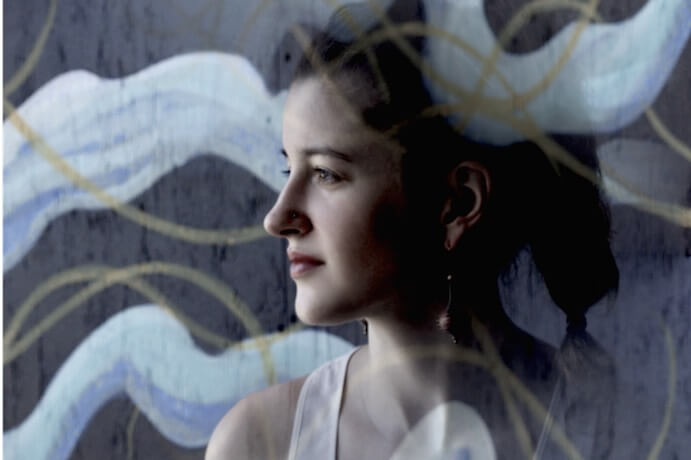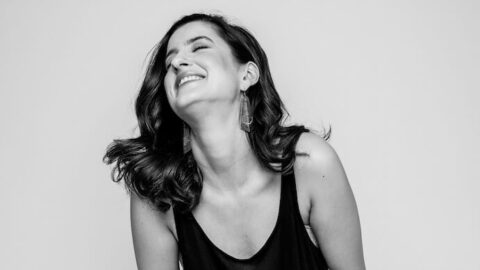Sophia Subbayya Vastek is a pianist and multidisciplinary artist who has performed in South Africa, Mexico and across the United States. She released three recordings in 2017, including her debut album Histories on Innova Recordings, which features music by Michael Harrison, Donnacha Dennehy and John Cage. She maintains ongoing collaborations with Harrison, composer David Ibbett and with Sam Torres as the electroacoustic duo Tilted Arc. Sophia is a co-founder of Music of Reality, an interdisciplinary event series which celebrates the beauty of the natural and human worlds in collaboration with researchers, scientists and other musicians. In summer 2018, she will co-direct (with Harrison) the two-week long Creative Music Intensive at Arts Letters & Numbers. She received a Bachelor of Music from Indiana University, Bloomington where she studied with Emile Naoumoff, the last pupil of Nadia Boulanger, and a Master of Music from Manhattan School of Music. We asked Sophia about her collaborations and piano work.
What are you most eager to share at the Creative Music Intensive this summer, and also perhaps to discover?
I’m very excited to be co-directing the Creative Music Intensive this summer with Michael Harrison. Arts Letters & Numbers has come to be a creative home for me over the years, and I’m thrilled to be able to share it with more musicians.
One of the core ideas behind Arts Letters & Numbers is that it isn’t outcome-driven. People of a huge array of disciplines (architects, engineers, visual artists, filmmakers, a resident chef and food artist) gather every summer for their 4-week workshop, and they simply… create. In a lot of ways, it’s the height of luxury and privilege. How often do we get to go into a situation and purposefully not know what lies on the other side? But I believe it’s crucial to carve out these bits of time for ourselves.
As musicians, we have to calibrate every situation so carefully. We have to be unbelievably organized in the writing process, rehearsal process, our finances, etc., otherwise a performance simply won’t happen. Or at least, it won’t happen to the best of our abilities. To strip all of that away and leave things open and unknown can be terrifying, but also liberating and ultimately, very important. The intensive will be a time to slow down and intimately evaluate what we’re each trying to do as a musician and artist, without the pressures of concert production, performance perfection, our careers, etc.
This is what excites me about bringing musicians to ALN and to the Creative Music Intensive, and what I’m personally most excited to share. There is an ethos that permeates the place, and which Michael and I will fold into the Music Intensive, that the questions we ask and the wandering we do IS the purpose of our time there. I always leave ALN feeling like I have a new urgency and purpose to my work, and with something new that I’ve discovered in myself. It’s a reset button, and I’m so excited to be able to share that with others.
What have you found to be the key elements and ideal outcomes of a successful collaborative relationship with another artist?
In my experience, the most important element of my collaborative relationships has been that we’re able to care for each other. Full stop. Because inevitably there comes a time when things get complicated, opinions diverge, and emotions ramp up. The best artists and collaborators are the ones who care deeply and richly about the project, and it’s at those complicated times that it can be easy to lose sight of the human on the other end of the relationship. A human who also cares deeply about the project. I find it crucial to have relationships in which we’re each able to take a step back and evaluate what we need to do to make sure that we’re still caring for that individual on the other side. A human who is bringing a complex, unique, and beautiful set of experiences and histories to that very moment, all of which need to be looked after.
I’ve found that if that level of mutual respect and ability to lift each other up is there, the relationship is golden and the outcome, more often than not, beautiful. It’s ultimately a collaboration in which each person is safe to be themself. That’s when magic happens.

Keeping in mind your one degree of separation from key figures Nadia Boulanger (via Emile Naoumoff) and La Monte Young (via Michael Harrison), how do you view artistic lineages in relation to collaboration?
Talking about artistic lineages makes me slightly uncomfortable, in all truthfulness. Because I never want to put more stock in “who we study with” or “who we’re in circles with” than the actual person present. Talking about these “key figures,” in a weird way, also distances us from them, even though we’re simultaneously making the connection to them as real-life people. It’s a strange paradox, but I do find it important to acknowledge where we come from, and all the various influences that we are synthesizing into a new outlook.
Studying with Emile was like being a grandchild to Nadia. The stories that he would tell were so full of love…Emile and Nadia were extremely close, and he took over teaching her classes after she died. I took his stories to heart and think of them often, and I know that I have parts of her philosophies in me via him.
When thinking about these figures, what strikes me about how I’ve been influenced by them is less about my musical style or way of performing–it’s a way of approaching music, and most importantly, a way of listening closely. I often talk about how the biggest thing that I learned from Emile was how to truly listen. He was an educator in the truest sense in that he showed me how to listen closely, ask questions, and teach myself. The same goes for Michael. I never studied with Michael in any official capacity but being around him so much has made it so that I’ve learned a great deal from him. Michael’s way of being is contagious. He’s infinitely kind and generous, and he has a way of approaching and being with music that is open and honest and all-ears.
I like to think that this is how I approach collaborations–with an open and listening heart. I certainly strive for that anyway. And both of these people–Michael and Emile–epitomize and model this way of being for me. I find I need these lineages as additional points of reference (in a broadly-drawn, intricate map) to help further locate myself, even when I’m firmly looking forward.
Can you talk about the origins of just intonation tuning in your work, and its importance in particular to your album Histories?
I am at the tip of the iceberg when it comes to just intonation and relating it to my work. The origin came soon after my father died, which was right around the time that I had started working with Michael more and more. These two events didn’t seem related at the time, but I’ve come to realize that they are, very much so. My father died fairly suddenly. It was a shock to all of us and threw me for such a loop that I couldn’t really play the piano for several months. I remember the feeling like it was yesterday–I was entirely disembodied. I would play the piano but I couldn’t actually feel the instrument or the music, both physically and emotionally. And I was feeling so cut off from every part of my history and heritage that it threw me into needing to know more about where I come from.
Slowly, over the course of a few months, I realized how to move forward. It manifested itself in the work that I started doing with Michael and learning more about Indian classical music. My father passing away and my beginning an exploration of Indian classical music might seem unrelated as my father immigrated here from Poland, but I realize now that I was needing to explore every facet of my heritage (my grandfather was from India). I needed to find little bits of myself from every corner of my history in order to start piecing myself back together again.
The first time I played a piano in just intonation was actually at my recording session for Histories. I remember so clearly hearing that piano and the way it fit in with the tuning of the tanpura (an Indian plucked string, drone instrument) that Michael was playing. It felt like I was finally realizing the full potential of the piano and the way that I needed to explore it. It was an amazing moment for me. There’s something so poetic about an instrument that has largely remain unchanged for well over a hundred years and changing its core design and intent. And just intonation really does fundamentally change the way the piano feels and resonates.
My mother is a beautiful pianist, and my father was also an extremely fine pianist. He had a complicated relationship with his musicianship (and with me), and he slowly let his joy for music fall away. But I grew up hearing pianos every day, napping under them, and playing as soon as I could sit upright. The piano is in my blood, in a very charged and complicated and joyful way, and this idea that I’m taking part of my history and honoring it, while simultaneously changing its very essence, is crucial to understanding where my trajectory is with just intonation and Histories.
How much do you see entrepreneurship forming the core of what you do, relative to being a performer?
The way this question is phrased implies to me that entrepreneurship and art-making might be separate parts of an artist. I don’t see them as separate–for me they’re very intertwined, with my entrepreneurship being entirely in service to the art-making.
That said, I don’t think I know anyone who hasn’t found themselves down at times because they’re spending more time emailing than actually making music… I have certainly been there! What helps me in those moments is remembering that whatever I’m doing is still serving the art, even if it isn’t specifically my art-making (I find presenting others to be an important part of my creative practice), and that that art will get to happen because I’m writing that email. It’s only a slight perspective shift, but I find it helps. And it really is a balancing act. In those moments, I have to conscientiously make sure that I carve out time for actual music-making, otherwise the business acts have no purpose.
























